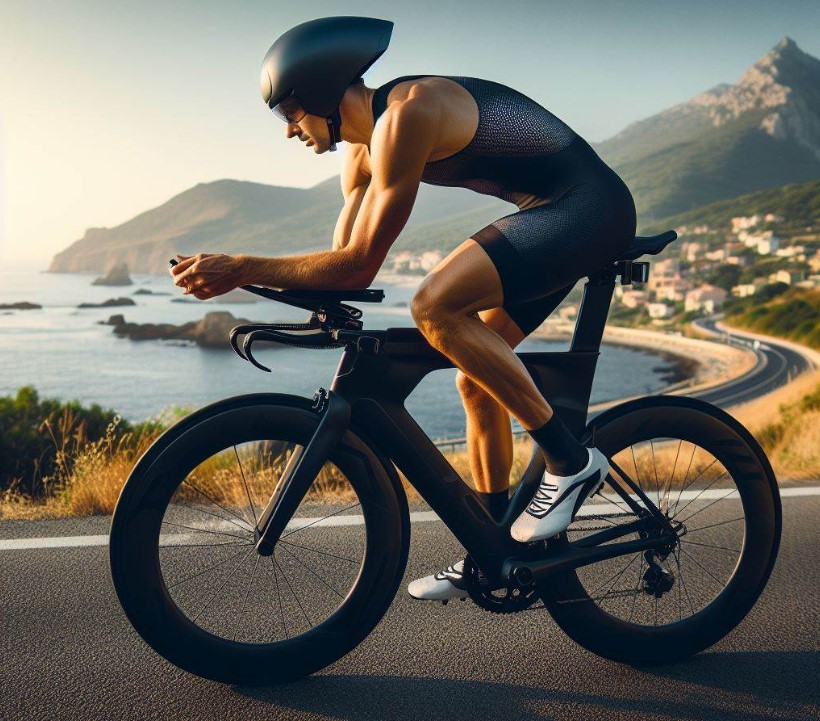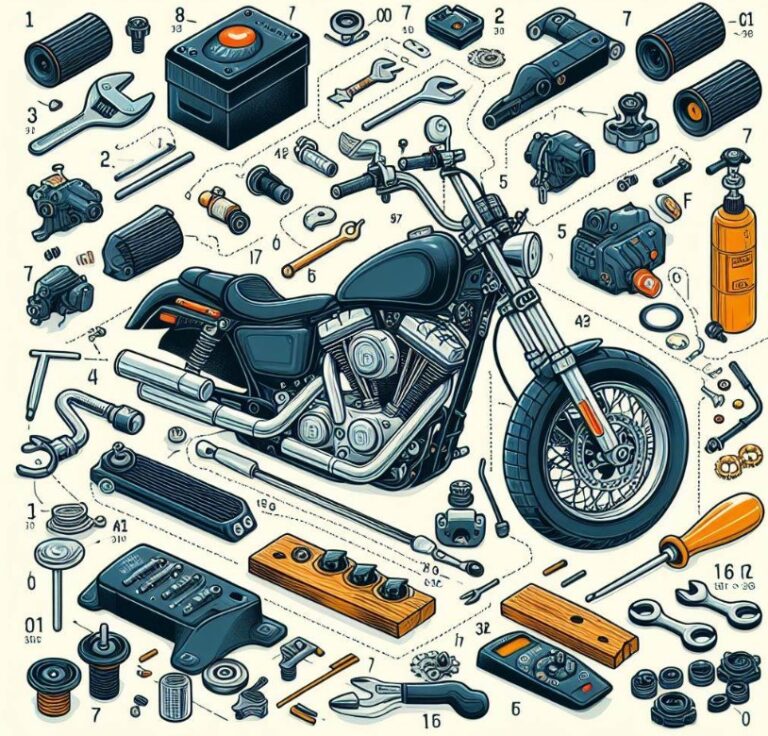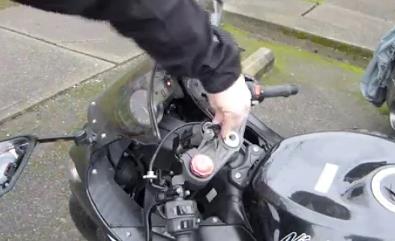What Type Of Bike For Triathlon? A Complete Breakdown
Are you looking for What Type Of Bike For Triathlon? Choosing the right type of bike for a triathlon is crucial for optimizing performance, comfort, and speed on race day. Whether you’re a beginner eager to embark on your first triathlon journey or an experienced athlete aiming for a personal best, understanding the differences between bike types and their impact on your race can significantly enhance your triathlon experience.
Key Takeaways
- Triathlon bikes are optimized for speed, aerodynamics, and rider efficiency.
- Understanding the differences between triathlon and road bikes is crucial for making an informed decision.
- Features like frame geometry, handlebars, and seat position play a significant role in performance.
What Type Of Bike For Triathlon?
For a triathlon, the best type of bike is a triathlon or time trial (TT) bike, designed specifically for the unique demands of triathlon racing, offering superior aerodynamics and efficiency.

Choosing the Right Bike
When it comes to triathlon, the type of bike you choose can make a substantial difference in your race performance. Triathlon bikes, also known as time trial (TT) bikes, are engineered specifically for triathlon races. Their design focuses on aerodynamics, allowing the rider to maintain a streamlined position, which reduces wind resistance and improves speed over long distances.
Triathlon vs. Road Bikes
Triathlon bikes feature a steeper seat tube angle compared to road bikes. This design pushes the rider forward, closer to the handlebars, optimizing the aerodynamics and the muscle groups used during the ride. It’s a position that enhances efficiency and speed, particularly over the flat and rolling terrains common in triathlon courses.
Key Features of Triathlon Bikes
- Aerodynamic Frame Design: The frames of triathlon bikes are built to cut through the air with minimal resistance.
- Integrated Handlebars: These handlebars are designed to reduce drag by keeping the rider’s arms closer together, in a more aerodynamic position.
- Forward Seat Position: Encourages a more efficient pedal stroke, especially when transitioning from biking to running.
Understanding these features is crucial for triathletes aiming to optimize their performance. The right bike can not only improve your speed but also save energy for the running segment of the race.
Materials and Construction
The construction of a triathlon bike plays a crucial role in its performance and price. Carbon fiber is the most popular material due to its excellent balance of strength, stiffness, and lightweight properties, making it ideal for achieving high speeds with less effort.
Carbon Fiber vs. Aluminum
- Carbon Fiber: Offers the best performance by providing a lighter, stiffer frame that translates to better speed and comfort.
- Aluminum: A more cost-effective option that still offers good performance, with a slightly heavier and less compliant ride compared to carbon fiber.
Selecting the right material depends on your budget, performance goals, and personal preference in ride quality. Investing in a carbon fiber bike can be beneficial for serious athletes focused on maximizing their speed and efficiency.
Bike Fit and Comfort
A proper bike fit is paramount for triathletes. It not only maximizes efficiency and aerodynamics but also ensures comfort during long distances. An ill-fitting bike can lead to muscle fatigue, discomfort, and even injury.
Importance of a Professional Bike Fit
- Custom Adjustments: A professional bike fit will tailor your bike’s dimensions to your body, ensuring optimal posture and pedaling efficiency.
- Injury Prevention: Correct alignment reduces the risk of overuse injuries by distributing force evenly across the muscles.
Investing in a professional bike fit can enhance your overall performance, comfort, and enjoyment of the bike segment in a triathlon. It’s a step that should not be overlooked by any athlete serious about their triathlon performance.
Aerodynamics and Speed
The pursuit of speed in a triathlon centers around aerodynamics. A bike that allows the rider to maintain an aerodynamic position without sacrificing power output or comfort is key.
Aerodynamic Enhancements
- Wheel Design: Aero wheels are designed to reduce drag, which can significantly improve speed.
- Helmet and Clothing: Aerodynamic helmets and tight-fitting clothing can also reduce air resistance.
Every detail matters when it comes to aerodynamics. The cumulative effect of several small improvements can result in noticeable gains in speed and efficiency.
Can You Use Any Bike for a Triathlon?
Yes, you can use any bike for a triathlon, including road bikes, mountain bikes, and even hybrid bikes. The choice largely depends on the race’s rules, the course’s nature, and the athlete’s personal goals.

Triathlon regulations, especially for beginner-friendly or shorter-distance races, are designed to be inclusive, allowing participants to compete with whatever bike they have, provided it’s safe and meets the event’s basic requirements.
This inclusivity encourages more people to participate in the sport without the need for significant initial investment. However, while any bike can be used, the type of bike can significantly affect performance.
Road bikes are commonly recommended for beginners due to their versatility and efficiency on paved surfaces, making them a suitable choice for most triathlon courses.
What Kind of Bike Do I Need for My First Triathlon?
For your first triathlon, a road bike is an excellent choice due to its versatility, comfort, and efficiency on paved roads. Road bikes are suitable for a wide range of triathlon courses and are a great starting point for beginners.
They allow new triathletes to get a feel for the sport without committing to the more specialized and often more expensive triathlon (TT) bikes. A road bike with a few modifications, like the addition of clip-on aero bars, can offer a comfortable, aerodynamic position similar to that of a TT bike, providing a good balance between speed and comfort.

This setup can serve well through training and the early stages of triathlon participation. As you gain experience and decide to pursue the sport more seriously, you might consider upgrading to a triathlon-specific bike for improved aerodynamics and performance in races.
Why Do Triathletes Use TT Bikes?
Triathletes use Time Trial (TT) bikes to maximize their speed and efficiency during the bike segment of a triathlon. TT bikes are specifically designed with aerodynamics in mind, featuring a frame geometry that allows the rider to adopt a more streamlined position.
This position reduces wind resistance and can significantly improve bike split times. The steep seat tube angle of a TT bike positions the rider further forward over the pedals, which optimizes the use of muscle groups that are less likely to fatigue quickly, saving the athlete’s legs for the running segment that follows.
Additionally, TT bikes are equipped with aero bars, which bring the rider’s arms closer together in front of the body, further reducing drag. These design features make TT bikes the optimal choice for triathletes looking to minimize wind resistance and maximize speed, especially over flat and long-distance courses.
Conclusion
In summary, while any bike can be used for entering a triathlon, investing in a triathlon-specific bike provides the best advantage in terms of aerodynamics, speed, and transition efficiency between cycling and running segments.
Your choice should balance between budget, experience level, and competitive goals, remembering that the journey toward your best triathlon performance begins with the right equipment.
Frequently Asked Questions
What Tires Are Best for Triathlon Bikes?
The best tires for triathlon bikes offer a balance between low rolling resistance, durability, and puncture resistance. Clincher tires with a high-quality, supple casing and a slick tread pattern are often recommended for their combination of performance and convenience. Tubeless tires are also gaining popularity for their ability to run at lower pressures without risking punctures, offering improved comfort and potentially better grip and speed.
Can I Train on a Triathlon Bike, or Should I Use a Road Bike?
You can and should train on your triathlon bike to get accustomed to the aerodynamic position and handling characteristics. Training on your triathlon bike helps improve muscle memory, comfort, and efficiency in the race-specific position. However, for variety and comfort on longer or more casual rides, many triathletes also train on road bikes. Using both can offer a balanced training regimen.
How Do I Choose the Right Size Triathlon Bike?
Choosing the right size triathlon bike involves considering your height, inseam length, and arm reach. Most brands provide size charts that correlate your body measurements with their bike sizes. However, because triathlon bike fit is so crucial for performance and comfort, it’s advisable to get a professional bike fitting where possible. This process will consider your specific body dimensions and flexibility to recommend the best bike size and setup for you.
What Maintenance Does a Triathlon Bike Require?
Regular maintenance for a triathlon bike includes cleaning and lubricating the chain, checking tire pressure and condition, ensuring brake and gear systems are functioning correctly, and inspecting the frame and components for wear or damage. It’s also important to have periodic professional checks for wheel alignment, bearing lubrication, and overall bike fit adjustments.

Welcome to the exhilarating world of Matt Rex, a professional car racer turned renowned vehicle enthusiast. Immerse yourself in his captivating blog as he shares heart-pounding adventures, expert reviews, and valuable insights on cars, trucks, jets, and more. Fuel your passion for speed and discover the beauty of vehicles through Matt’s engaging stories and meticulous expertise. Join the ever-growing community of enthusiasts who find inspiration and expert advice in Matt Rex’s blog—a digital hub where the thrill of speed meets the pursuit of knowledge.







